- Home
- Richard Preston
First Light: The Search for the Edge of the Universe Page 2
First Light: The Search for the Edge of the Universe Read online
Page 2
Lily noticed Juan’s worry. “Sometimes I wonder,” she once remarked to me, “if Juan hates to make mistakes.” When Juan had been a young father, he had carried his baby daughters around on pillows—he had been that afraid of breaking them. This man had thought you could break a baby just by handling it. This man had been made for handling the controls of great telescopes.
Juan turned up the television for the weather report. Night fog was coming, with marine winds. That was a good sign, and he began to feel that tonight could turn into a clear night for looking at galaxies. At 5:45 P.M. he fitted his hard hat on his head and picked up his flashlight. “Bueno,” he said. “Ya me voy”—“I’m going.”
“Que te vaya bien,” she said, and kissed him. “That you may go well.”
Juan walked along a road that crossed a shoulder of Palomar Mountain, a long hogback ridge, 5,600 feet high, situated in the coastal ranges of southern California, about halfway between Los Angeles and San Diego. Smelling wood smoke mixed with a tang of Pacific Ocean fog, he walked past a grove of fir trees where small stucco houses were almost hidden, belonging to other members of the mountain staff of Palomar Observatory. The road turned through a field of brown ferns and headed for an ivory dome. Deep stands of cedar, white fir, Valparaiso oak, and leafless black oak covered Palomar Mountain, and grassy meadows unfurled among the trees. On dry, sunny slopes grew chokecherry, blue buckthorn, wild lilac, wild coffee with a poisonous bean, and a type of ragged dwarf oak with spiny leaves, called carrasco—Juan’s last name. Palomar means “dovecote” in Spanish, and indeed, the mountain in autumn and spring fills with shoals of migrating birds. No birds sang on the mountain yet, on this night in early March, because at an altitude of more than five thousand feet, spring came slowly to southern California, but the toads had woken up from their winter’s sleep, and in the cold of evening they said keep, keep, in voices so halting and tentative that they sounded in pain.
Looking west, Juan saw that the moon had already gone down to its grave. The moonless time of the month had arrived, which the astronomers called dark time. They regarded dark time in spring as the best time for seeing galaxies, because in spring, the Milky Way lay along the horizon, where it would not interfere with the view straight up into the deep. When the Milky Way was high in the sky, it blocked a telescope from seeing into the deep universe. During dark time—moonless nights—in spring, you could point a telescope straight up past the Milky Way into extragalactic space, and there was no moon to wash the blackness from the sky. As Juan rounded a bend and neared the dome, he saw a fog bank hanging over a ridge to the west. He regarded the rising fog as a good omen, as long as it did not cover the mountain. City lights smeared a stain across the sky the color of egg yolk. If the fog socked in the valleys tonight, it would cover the lights of surrounding cities while leaving the skies above the mountain transparent and inky black—perfect for seeing galaxies. The sun had dropped behind the fog, and Juan noted with approval the color of the dying light; it was bluish white—no dust in the air. He knew exactly where the sun was. Exactly. He saw that in about six minutes the sun would set. Palomar Mountain would roll into the terminator of earth-shadow, and a view of the universe would begin to unfold.
The dome looked like Hollywood’s idea of a Mayan temple. Juan fitted a key into a tall coffered door, and a small service door opened inward. It closed behind him with a bang that echoed among steel piers. It was dark in there. He flicked on his flashlight and climbed a long flight of stairs. He pushed through a door onto the main floor of the dome, at the base of the two-hundred-inch Hale Telescope. Smelling paint and sweet oil, he touched the brim of his hard hat and looked up. He saw that the shutters of the dome were closed, and that the Hale Telescope was pointed straight up, in its normal resting position. It rose seven stories over his head. The Hale hardly looked like a telescope at all to most people: it was a skeleton tube made of struts and girders. Covered with battleship-gray paint, the Hale Telescope looked more like a terrible weapon than a mirror for making images of time gone by. Even after so many years, one still felt a little bit of fear looking up at that instrument; one felt a little bit of fear, always.
Under the telescope an engineer walked back and forth, wreathed in clouds of vapor, pumping Jim Gunn’s camera full of liquid nitrogen, preparing it for the night. Juan opened his locker. His breath steamed in the cold. He pulled out a cardboard box, which filled his arms. He shut the locker and crossed the floor gingerly, mindful of the transparent puddles of oil that bled a little from the telescope most nights. His box read LA VICTORIA MARINATED JALAPEÑOS. He had found it in the trash, and although he had prolonged the box’s life by winding bands of clear tape—Palomar Glue—around and around it, the box had grown round and flabby.
The marinated-jalapeños box held Juan’s notebooks, which contained arcane lore diagnostic of the Hale’s innumerable tics. The Hale Telescope had taken twenty-one years to build, from 1928 to 1949. It contained thousands of components—motors and relays, gears and wheels, pipes and pumps—dating from the 1930s. Parts made by companies now bankrupt or merged. Parts unobtainable. Parts no longer understood. Juan Carrasco considered himself to be a small component in an enterprise that seemed to extend beyond Palomar Mountain, beyond the United States, beyond, perhaps, the world. He doubted his importance to this enterprise. Although he had spent fifteen years climbing all over that telescope, patting it with a dust mop and crawling through hidden rooms inside the telescope, he felt that the Big Eye remained, in certain ways, a mysterious instrument. He felt that if he and the astronomers were to cease to exist, other people would find a use for the Hale Telescope. “Man is dispensable,” Juan liked to say. “Telescopes are not.” Feeling a tiny bit of nervousness, he entered a small room tucked into the wall of the dome, called the data room. There he saw Maarten Schmidt. Schmidt was a tall astronomer with curly, silvering hair. Schmidt smiled and said, “Good evening, Juan.”
“The valleys are filled with fog, Maarten.”
“Ah,” Maarten Schmidt said. “Good.”
“I say it’s going to be clear tonight.” Juan crossed the room and spoke to an astronomer who had a beard and glasses. “Professor James E. Gunn,” Juan said. “Are we going to see galaxies tonight?”
Gunn grinned and said, “I don’t know, Juanito.”
There were two other people in the data room. One was a young astronomer with blond hair and a beard, named Donald Schneider. He sat facing a computer terminal, next to a computer programmer from the Jet Propulsion Laboratory in Pasadena named Barbara Zimmerman. She was in her forties, and had brown hair and a broad face, and her hands moved decisively over a computer keyboard. She was hammering out an untested computer program: jazz software. “Hey, Juan,” she said without looking up.
“Hello, hello,” Juan said.
Juan placed his hard hat and the box of marinated jalapeños on a shelf and sat in a swivel chair. Panels surrounded him on three sides, covered with switches and video screens. He hit a switch, and a set of Vickers pumps began to whine, driving Flying Horse telescope oil onto the Hale Telescope’s horseshoe bearing. He checked the temperature of the mirror. It was normal. Tonight the controls of the Big Eye belonged to a man who had once been a barber in San Antonio and Pecos, Texas, himself no astronomer, because nobody in their right mind would let an astronomer touch the controls of one of the most powerful telescopes on earth.
Earlier that afternoon, just hours before his team was scheduled to begin a new phase of its search for the edge of the known universe, the distinguished astronomer James E. Gunn was sitting at a workbench in a room called the electronics shop, in a lower level of the dome of the Hale Telescope. Jim Gunn was dabbing with a soldering iron at a small blue metal box. A curl of smoke went up from the box. He blinked, dragged a handkerchief from his pocket, and sneezed. He blew his nose and threw the handkerchief on the workbench. He said, “I seem to have the East Coast bug.” He snapped a lid on the box. “I don’t know what you’d
call this little device,” he said. “It doesn’t have a name.”
The box was a rat’s nest of spare parts, the size of a cigarette pack. It contained resistors, capacitors, and a few semiconductor chips, which Gunn had rooted out of bins in the electronics shop. In Gunn’s universe such a device is known as a kludge. The word rhymes with stooge. The box exhibited one toggle switch. Gunn, who had a way of emphasizing certain words when he talked, said, “This thing, whatever you call it, will allow us to take data from the Hale Telescope’s camera in a way that’s particularly effective for finding quasars. We want to park the telescope and just let the stars go by as the earth turns. That produces a continuous picture of sky, like a long piece of film. Unfortunately, the camera on the telescope was not designed to do this.”
Astronomers, for the most part, do not look through telescopes anymore. They look at a television screen, which displays an image of the night sky. Virtually all professional telescopes these days have cameras attached to them, and most of those cameras use electronic sensors. The systems required to operate a modern telescope are similar to the systems used to operate a spy satellite. One needs a giant mirror. One needs an electronic camera that focuses large amounts of faint light onto a small, hypersensitive silicon sensor chip. One needs a knowledge of computer programs and of robots. The difference is that astronomers point their sensors away from the earth.
For the last three days Jim Gunn had been getting one or two hours of sleep a night, which dismayed him, because he felt that he had been sleeping too much, probably because he was running a slight fever. He said, “I can’t do twenty-four-hour days anymore. I’m getting too old.” His other problem, at the moment, was that he had to deal with a reporter. I was taking notes while Gunn worked.
Gunn was then forty-seven years old and slightly under medium height. He has a beard and heavy eyebrows. He has a bold forehead, a fringe of brown hair going thin on top, and alert brown eyes. He is known and admired all over the earth, the recipient of more awards and prizes than he can keep track of or remember. He is a professor at Princeton University. That evening, he wore a brown cable-knit sweater drilled with one or two moth holes, and greasy blue trousers of the style worn by gas station attendants. The pockets of these trousers had been used to carry objects never meant to be put into pockets, and thus were either ripping out or rotting out along the leg seams. On the floor sat his toolbox. Lettering on it read J. GUNN. It was a Sears Craftsman toolbox. It was crammed with tape, wire, electronic chips, screws, nuts, gimcracks, and many different types of pliers. On the workbench sat a pair of gold-rimmed eyeglasses, which were padded around the nosepiece with a wad of electrical tape. He said the tape helped his glasses sit more comfortably on his nose.
The Hale Telescope, and the three other working telescopes at the Palomar Observatory, are owned by the California Institute of Technology—a place better known as Caltech. Caltech is a small private university located in Pasadena, California. Around the basements and laboratories of Caltech, Jim Gunn and his ilk are sometimes referred to as plumbers. They are also known as the Palomar gadgeteers. They are, in fact, professional astronomers who happen to build their own instruments. Gunn was the plumber for a team of astronomers that had been trying to map the edge of the universe. Such an effort required teamwork, and certainly a plumber. The two other members of the team were Maarten Schmidt, who was the team leader, and Donald Schneider, who was Schmidt’s assistant. The team also had the help of various engineers and programmers, including Barbara Zimmerman.
Gunn was beginning to get frustrated with this job. For three years now the team had been looking for quasars of a certain rare type. They had not yet found any quasars of this type. Quasars were points of light that glittered in the depths of the universe; cosmic lighthouses. The team wanted to find and map the locations of a few of the most distant quasars. They believed that in doing so they could trace the contour of an otherwise hidden shore: the outer limit of the optically explorable universe. For this particular attempt the team had been awarded four nights on the Hale Telescope in March, when the moon would be down and the Milky Way would be lying flat on the horizon, affording a view of deep sky.
The team had decided to try to doctor the camera on the telescope so that it would scan across the sky, which would speed up the search for quasars. That would be like panning a video camera across a landscape, except that they would pan a telescope across the universe. The Hale Telescope’s camera was an electronic system meant for taking snapshots, not motion pictures. The camera, being full of robotic devices, was controlled by a computer that sat on a floor below the telescope, which needed to be rebuilt for the experiment. The quasar team had hired an engineer named Richard Lucinio to tear down this computer and rewire it. Then, just before the moon waned, Richard Lucinio went to the hospital. In Lucinio’s words, “I had something funky in my stomach, and to this day I don’t know what it was.” Neither did two gastroenterologists, musing over Lucinio’s gut and wondering whether to operate. Meanwhile the computer at the Hale Telescope remained inoperable. The quasar team had been given a chance to use the Hale and they did not want to throw that chance away merely because their computer engineer might be dying. Gunn had no choice but to try to save the experiment with a soldering iron.
Gunn lives in Princeton, New Jersey. He took a taxi to the Newark airport before sunrise. He flew to Los Angeles. He rented a car and drove to Caltech, where he picked up the J. GUNN toolbox, and then he headed east and south on Interstate 210. When he arrived at the dome of the Hale Telescope, he went inside the dome and lived there for the next three days, until he had built the kludge.
Gunn turned the kludge over in his hand and contemplated it. It would help the telescope’s camera to talk to its computer. “You don’t design a thing like this,” he said. “You look and see what you’ve got. Then you build it.” Gunn figured that he could stick it like a limpet to the camera. He figured that if he flipped the toggle switch on the kludge to “scan”—he had written “scan” beside the switch to remind himself which way to throw it—the kludge would transform the Hale Telescope into a motion-picture scanner.
He picked up an object that looked like a flare pistol. He said, “This is an eight-hundred-degree hair dryer.” He aimed it at the back of his hand and pulled the trigger to see if it worked. There was a whir and a smell of burning hair. “Mm!” he said. “It’s working.” He directed the hair dryer at a shrink-wrapped cable emerging from the kludge, and the cable shriveled. Then, picking up a soldering iron, a roll of wiring diagrams, and the kludge, Gunn ran out of the room. Astronomers call a set of nights on a telescope a “run,” and the term is not a metaphor. Gunn took an elevator up one level. He stepped out of the doors of the elevator and onto the main floor of the Hale dome, where stands the largest working telescope on earth.
The Hale Telescope, which is the size of a small office building, was bathed in sodium light, and the light revealed gleams and glints of metal inside the dome. Whether accidentally or on purpose, the Hale dome is almost exactly the size of the Pantheon in Rome. Jim Gunn took a moment, as he often did, to run his eyes over the telescope. He would admit that he could never look up without a sense of disbelief at the last telescope built by George Ellery Hale. “More than slightly mind-boggling,” Gunn would say of it. Then Gunn hurried across the floor and ran up a set of stairs into a steel-mesh cage that hangs from the butt of the telescope. This cage is directly beneath the telescope’s main mirror—a concave mirror made of flame Pyrex glass two hundred inches (sixteen feet, eight inches) across and coated with a reflective layer of aluminum on its upper surface. The mirror has a hole in its center. The concave face of the mirror looks skyward through the tube of the telescope and gleams at night with reflections of stars, like a pool of water resting at the bottom of a well.
Gunn spread his wiring diagrams on the floor of the cage under the mirror. He picked up a flashlight, which seemed to have died. “Dammit,” he growled, rapping the f
lashlight on the cage. The bulb glowed a little. He pointed the flashlight around. The floor of the cage was littered with Allen wrenches, alligator pliers, screwdrivers, and rolls of tape. He pointed the flashlight up at a camera plugged into a socket at the base of the telescope, like a shell loaded into a cannon. “That’s 4-shooter,” he said. “It’s been in place a tad more than a year.” 4-shooter is the Hale Telescope’s main camera; Jim Gunn built it.
Gunn clamped the flashlight between his knees and aimed it upward, in an attempt to throw some light on his camera, while he reached up with both hands and grabbed a hank of loose cables. He dredged a Swiss officer’s knife from his pocket, and with it he sliced open a cable. “Gah!” he grunted. He ripped away plastic tissue. “Come on there!” he said, pulling forth a rattail of multicolored wires. He began to graft various wires that were sticking out of the kludge into 4-shooter’s nervous system, using a soldering iron. “On a scale of one to ten,” he suddenly remarked, “this crisis is only a twenty.” He stabbed the soldering iron at a wire and a puff of smoke went up. “I’ve seen things go higher than twenty,” he added. “There is still a happiness at twenty.”
The camera called 4-shooter is a white cylinder, five feet long and two and a half feet in diameter, and it weighs 1,500 pounds. Plugged into the bottom of the Hale Telescope, it pokes through the hole in the center of the mirror. Although the camera is enormous (for a camera), from a distance it looks no bigger than a rivet fastened at the bottom of the Hale. Gunn built this camera from scratch in a Caltech basement known as the Wastebasket, where he received much help and many used parts from certain Caltech engineers and technicians who happen to be experts in the arcana of trash, and who are known collectively as the Wizards of the Wastebasket. In certain ways, 4-shooter resembles a scientific package on a spacecraft: it contains a variety of quartz lenses and mirrors, forests of gold connectors and gold-plated parts, and advanced imaging sensors. In other ways it resembles an outrageous kludge: it contains tangles of stainless-steel plumbing, surplus wires, junk motors purchased at deep discount (for ten cents on the dollar or less), movie projector belts, a broken razor blade, Ensolite foam, piano wire, grease, glue, and small, powdery crystals of dried sweat.

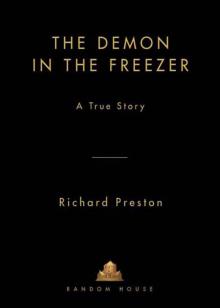 The Demon in the Freezer
The Demon in the Freezer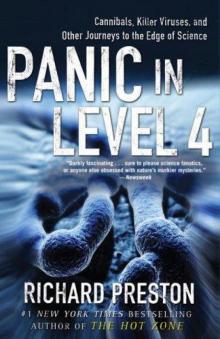 Panic in Level 4: Cannibals, Killer Viruses, and Other Journeys to the Edge of Science
Panic in Level 4: Cannibals, Killer Viruses, and Other Journeys to the Edge of Science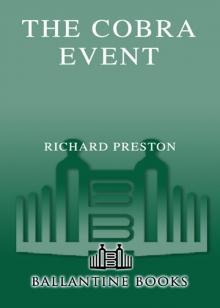 The Cobra Event
The Cobra Event The Hot Zone
The Hot Zone Crisis in the Red Zone
Crisis in the Red Zone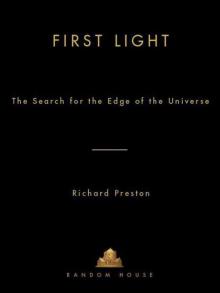 First Light: The Search for the Edge of the Universe
First Light: The Search for the Edge of the Universe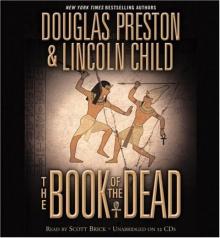 The Book of the Dead
The Book of the Dead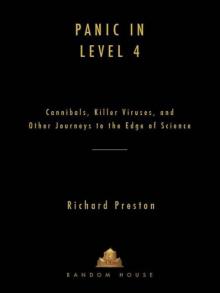 Panic in Level 4
Panic in Level 4